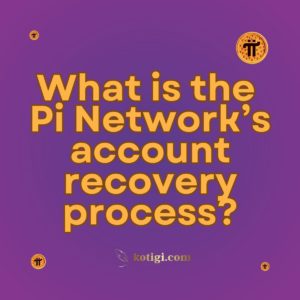
What is the future of regulation for Pi Network?
The future of regulation for Pi Network, like many emerging cryptocurrencies, is likely to be shaped by the evolving legal landscape around digital assets. As governments and regulatory bodies around the world continue to develop frameworks for managing cryptocurrencies, Pi Network will need to adapt to ensure compliance and sustainability. Here’s what the future of regulation might look like for Pi Network:
1. Increasing Regulatory Scrutiny
1.1. Growing Attention from Regulators:
As Pi Network gains popularity and its user base expands, it is likely to attract more attention from regulatory authorities. This increased scrutiny could lead to new regulatory requirements, particularly in areas such as anti-money laundering (AML) and consumer protection.
1.2. Possible Classification as a Security:
One of the key questions facing Pi Network is whether its native cryptocurrency, Pi, will be classified as a security by regulators. If Pi is deemed a security, the network would be subject to strict regulations, including registration with financial authorities, disclosure requirements, and other compliance obligations. This would significantly impact how Pi Network operates and interacts with users.
2. Compliance with Global and Local Regulations
2.1. Adapting to Different Jurisdictions:
Cryptocurrency regulations vary widely from country to country. Pi Network will need to navigate this complex landscape by complying with local laws in each jurisdiction where it operates. This may involve implementing region-specific measures, such as differing KYC (Know Your Customer) processes or data protection practices, depending on the regulatory environment.
2.2. Adhering to Data Privacy Laws:
With regulations like the General Data Protection Regulation (GDPR) in the European Union, Pi Network will need to ensure that it handles user data in a manner that complies with stringent privacy laws. This includes securing user consent, safeguarding personal information, and providing transparency about data usage.
3. Proactive Regulatory Engagement
3.1. Building Relationships with Regulators:
To navigate the future regulatory landscape effectively, Pi Network may choose to engage proactively with regulators. By participating in discussions, submitting feedback during regulatory consultations, and adhering to best practices, Pi Network can help shape the rules that govern its operations and ensure that its interests are represented.
3.2. Lobbying for Favorable Regulations:
As the cryptocurrency industry matures, there will be opportunities for Pi Network to advocate for regulations that support innovation while protecting users. Engaging in industry lobbying efforts or joining cryptocurrency advocacy groups could help Pi Network influence regulatory developments in a way that benefits its ecosystem.
4. Compliance with Financial Regulations
4.1. Anti-Money Laundering (AML) and Counter-Terrorism Financing (CTF) Compliance:
As with all cryptocurrencies, Pi Network will need to comply with AML and CTF regulations to prevent its platform from being used for illegal activities. This includes implementing robust KYC processes and monitoring transactions for suspicious activity. The effectiveness of these measures will be crucial in maintaining regulatory approval.
4.2. Tax Reporting and Compliance:
As tax authorities around the world increase their focus on cryptocurrency transactions, Pi Network users may be required to report their holdings and transactions for tax purposes. Pi Network will need to provide clear guidance on how users can comply with these requirements, potentially offering tools or integrations to assist with tax reporting.
5. Potential Regulatory Challenges
5.1. Risk of Overregulation:
One of the challenges Pi Network may face is the risk of overregulation, where overly stringent rules could stifle innovation or limit the network’s ability to operate effectively. To mitigate this risk, Pi Network will need to remain agile and responsive to changes in the regulatory environment, potentially seeking exemptions or special status where appropriate.
5.2. Legal Disputes and Litigation:
As with any cryptocurrency, there is a risk that Pi Network could face legal disputes or litigation, particularly if users or regulators believe that it has violated laws or regulations. To minimize this risk, Pi Network will need to maintain high standards of legal and regulatory compliance and be prepared to defend its practices in court if necessary.
6. Future Regulatory Developments
6.1. Development of Global Standards:
In the coming years, there may be a push towards developing global standards for cryptocurrency regulation. If such standards emerge, Pi Network will need to align its operations with these guidelines to ensure it remains compliant on a global scale. This could involve participating in international regulatory discussions or adopting widely accepted best practices.
6.2. Adoption of Blockchain and Cryptocurrency Regulations:
As blockchain technology continues to evolve, regulators may introduce new rules specifically designed for decentralized networks and digital assets. Pi Network will need to stay ahead of these developments, adapting its platform to meet new legal requirements while continuing to provide value to its users.
Conclusion
The future of regulation for Pi Network is likely to be shaped by the growing scrutiny of cryptocurrencies, evolving legal frameworks, and the need for compliance with a diverse range of global and local regulations. As Pi Network continues to expand, it will need to proactively engage with regulators, adapt to new laws, and ensure that it maintains the highest standards of legal and regulatory compliance. By doing so, Pi Network can position itself for long-term success in a rapidly changing regulatory environment.





